Job Offer Withdrawal Letter Template for Employers
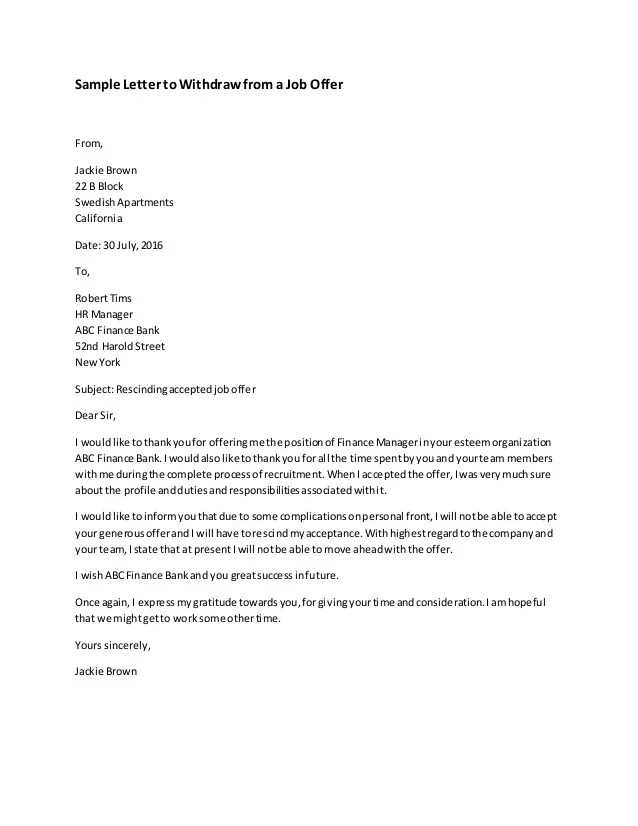
When a decision is made to retract a previously extended employment opportunity, clear and respectful communication is essential. It is important to ensure that the message is conveyed professionally while maintaining a positive relationship with the candidate, even if the circumstances have changed.
Effective communication in such situations helps to manage expectations and minimize any negative impact on the reputation of the company. The way the situation is handled can reflect the values and professionalism of the organization.
Crafting the right message involves more than just informing the candidate of the decision. It is about balancing transparency, empathy, and respect to avoid misunderstandings and preserve the company’s standing in the job market.
Job Offer Withdrawal Letter Employer Template
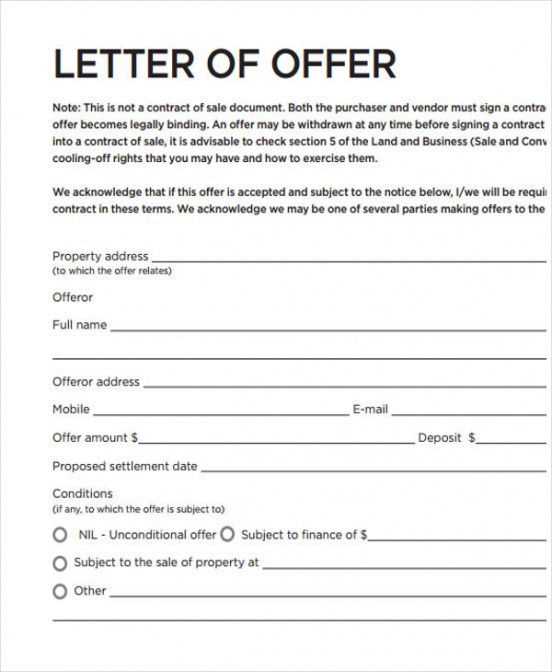
When a company needs to inform a candidate about a change in their hiring decision, it is crucial to handle the situation with care. A well-crafted message ensures that the candidate is respected, and the organization’s professionalism is maintained. This section will guide you on how to properly convey the decision without damaging the relationship or reputation.
Key Elements to Include
In crafting the message, start with a polite and straightforward introduction. Acknowledge the candidate’s time and interest, then briefly explain the situation. Providing context is important, but it should remain professional and considerate. Offer your apologies for any inconvenience caused, and assure them that the decision was not made lightly. End with a courteous closing, expressing good wishes for the candidate’s future endeavors.
Maintaining Professionalism
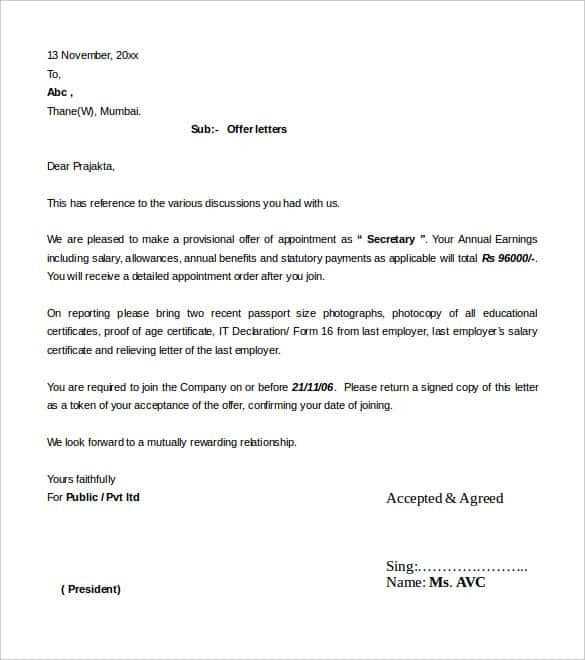
While the situation can be uncomfortable, it’s important to maintain a tone of empathy and professionalism throughout the message. Express understanding of the candidate’s potential disappointment, and avoid over-explaining or providing unnecessary details. A simple, respectful note can go a long way in preserving the relationship for any future opportunities.
Understanding the Need for Withdrawal Letters
There are occasions when a company must rescind a previously extended employment proposal. Whether due to internal changes, unforeseen circumstances, or shifts in business priorities, it’s important to communicate such decisions effectively. A well-constructed message is key to managing the situation professionally, ensuring clarity, and reducing potential negative outcomes.
Why It’s Essential to Notify Candidates
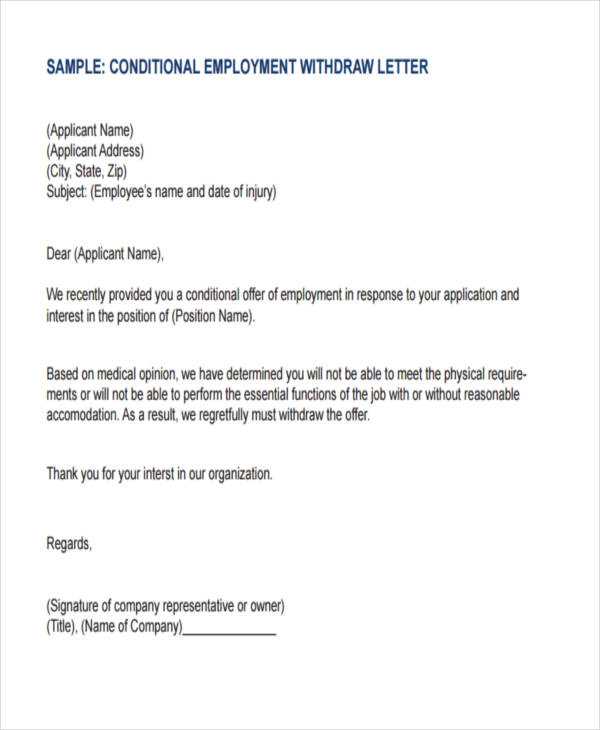
Not informing candidates about changes can create confusion, disappointment, and frustration. A clear, respectful notification:
- Maintains the company’s reputation and professional image.
- Ensures transparency, helping the candidate understand the reasons behind the change.
- Prevents unnecessary misunderstandings in the hiring process.
Impact on Future Opportunities
Even if a hiring decision is reversed, a respectful communication approach can preserve the relationship for potential future openings. By addressing the situation with sensitivity, employers show their commitment to fair practices and maintain goodwill for potential engagements down the line.
Key Elements to Include in a Letter
When informing a candidate about a change in the hiring decision, it’s important to structure the message in a way that conveys professionalism and respect. A well-organized communication not only explains the situation but also helps maintain a positive relationship. Below are key elements to include to ensure clarity and professionalism.
Core Components of the Message
A complete and effective notification should cover the following points:
- Introduction: Begin with a courteous greeting and acknowledge the candidate’s interest in the position.
- Clear Explanation: Briefly state the reason for the decision, ensuring that the candidate understands the situation.
- Apology: Offer a sincere apology for any inconvenience caused by the change in plans.
- Closing Remarks: End with well-wishes for the candidate’s future career and a polite sign-off.
Maintaining Tone and Professionalism
Throughout the message, it’s vital to maintain a tone that is both respectful and empathetic. While the situation may be disappointing for the candidate, ensuring that your communication is warm and professional can help preserve goodwill. Avoid using overly technical language or unnecessary details, focusing instead on clarity and conciseness.
How to Maintain Professionalism in Communication
When informing a candidate about a change in a hiring decision, it’s essential to ensure that the message remains professional and respectful. Maintaining a professional tone throughout the communication helps protect the company’s reputation and fosters good relationships, even when the situation is less than ideal.
Focus on Clarity and Respect
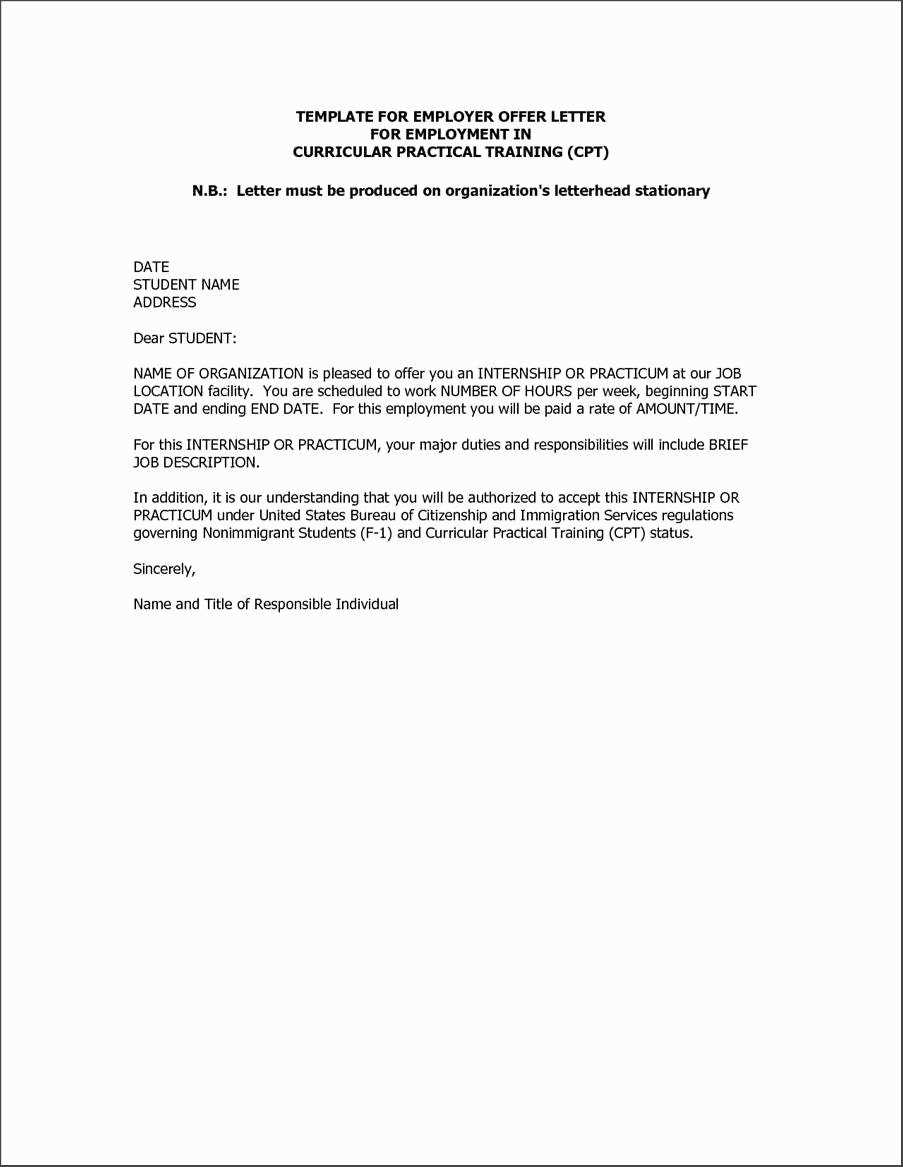
The first step in maintaining professionalism is to ensure that the message is clear and direct without being overly blunt. Avoid using negative language and instead focus on presenting the information respectfully. Acknowledge the candidate’s interest and time invested while delivering the news in a way that minimizes any potential disappointment.
Use a Neutral and Courteous Tone
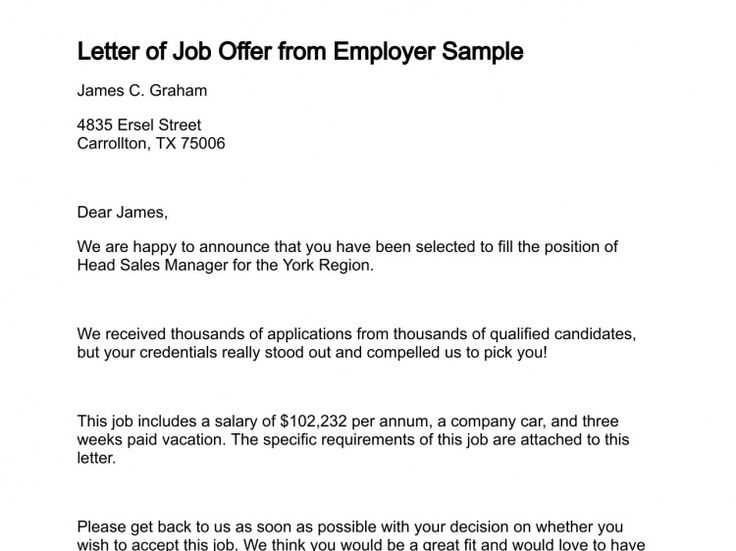
Throughout the communication, it is important to strike a balance between professionalism and empathy. Ensure that the tone does not come across as harsh or dismissive, but rather as thoughtful and considerate. Using polite phrases, such as “We regret to inform you,” or “We sincerely appreciate your interest,” helps maintain a respectful tone.
Common Mistakes to Avoid in Letters
When communicating a change in a hiring decision, there are several pitfalls to avoid to ensure the message is professional, respectful, and clear. Missteps in tone, content, or delivery can lead to misunderstandings or negative reactions. Being mindful of these common errors can help maintain a positive relationship with the candidate and protect the organization’s reputation.
Over-explaining or Over-apologizing: While it’s important to address the situation, excessive explanations or apologies can undermine the message. Keep the communication concise and to the point. Over-explaining can also appear defensive and create unnecessary confusion.
Failing to Acknowledge the Candidate’s Effort: It’s essential to recognize the time and effort the candidate invested in the process. Neglecting to acknowledge this can come across as dismissive or disrespectful. A simple acknowledgment of their interest can go a long way in maintaining goodwill.
Legal Considerations for Employers When Withdrawing Offers
When rescinding a previously extended position to a candidate, companies must be aware of the legal implications involved. Ensuring compliance with relevant laws helps avoid potential legal disputes and ensures a fair and transparent process. Below are important legal factors to consider before making such a decision.
| Consideration | Details |
|---|---|
| Employment Contracts | Review any agreements, including verbal or written contracts, to understand the terms surrounding the offer and any obligations to the candidate. |
| Discrimination Laws | Ensure that the decision to rescind the position is not based on discriminatory grounds such as race, gender, or age, as this can lead to legal consequences. |
| Timing | Make sure the decision to withdraw is made promptly, and the candidate is notified as soon as possible to avoid unnecessary harm or inconvenience. |
| Compensation | In some cases, the candidate may be entitled to compensation for expenses incurred during the hiring process. Be prepared to cover reasonable costs if necessary. |
Tips for Handling Negative Reactions from Candidates
It’s inevitable that some candidates will feel disappointed, upset, or frustrated when they learn that the decision regarding their potential position has changed. Handling these negative reactions with professionalism and empathy is crucial to maintaining a positive reputation and fostering respectful communication.
First, always remain calm and composed. When faced with an emotional or upset response, it’s important to listen actively, acknowledging the candidate’s feelings. Offer a clear explanation while being respectful and considerate, and avoid defensive or dismissive language. Make sure to express gratitude for the candidate’s time and effort during the process.
Another important approach is to remain transparent and provide a simple but honest rationale for the change in decision. While you don’t need to go into unnecessary detail, offering some context can help the candidate better understand the reasoning behind the decision and feel respected, even if the news is not what they expected.
Lastly, always offer a path forward. Even if the candidate is not selected for the role at hand, leaving the door open for potential future opportunities shows respect and consideration for their continued interest in the company.